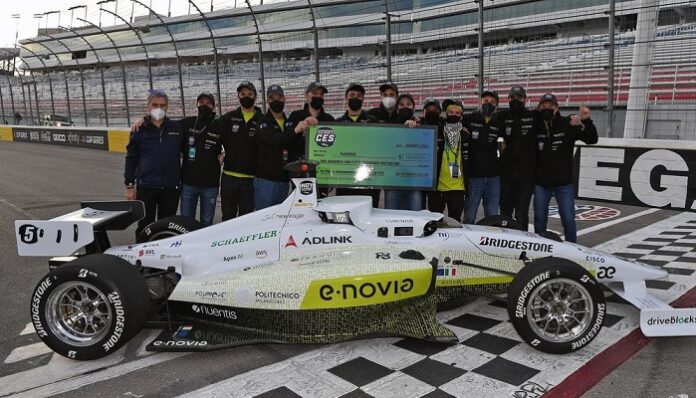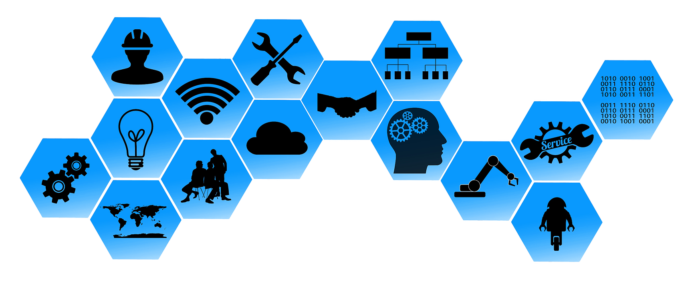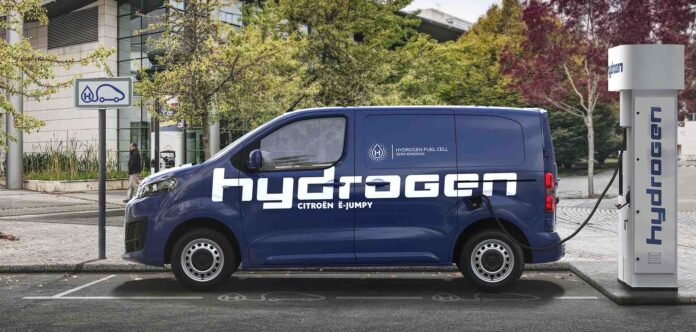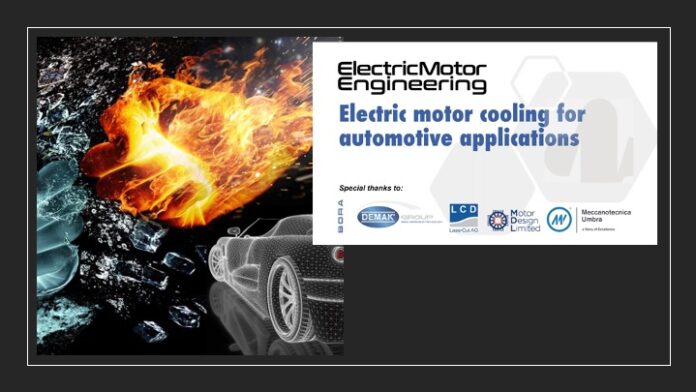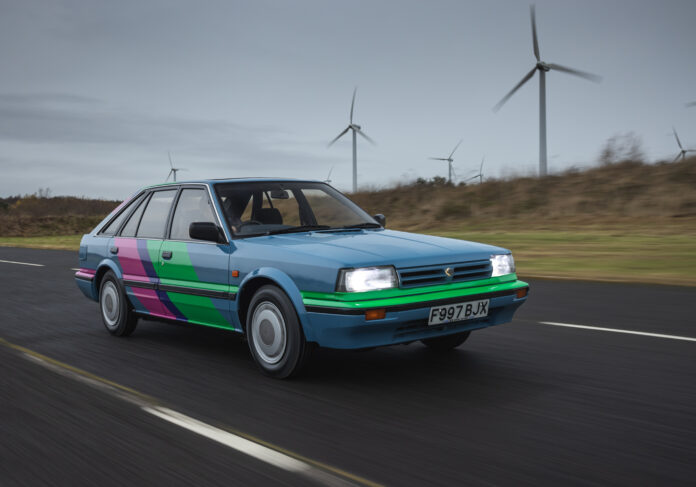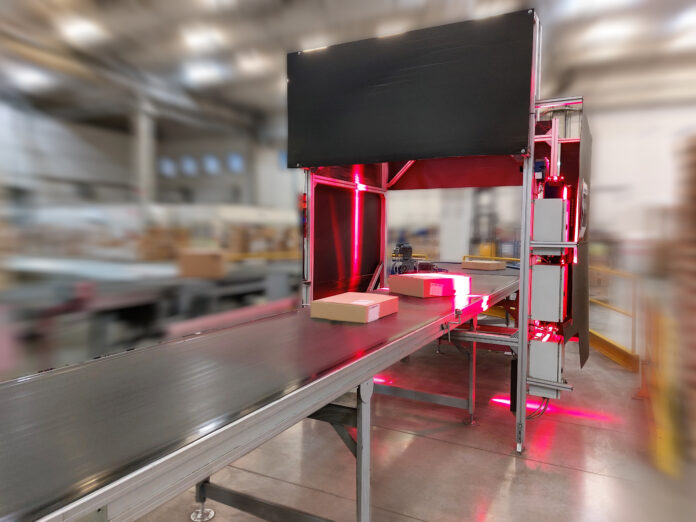The top player in Detroit has recently announced a record investment worth 6.6 billion dollars in Michigan to enhance the production of electric vehicles, of which 2.6 billions to build a factory for electric batteries, in joint venture with LG Energy Solution. The target would be increasing the yearly production capacity to one million vehicles within 2025.
«This significant investment -said Mary Barra, GM Chair and CEO – demonstrates our commitment to strengthen our Michigan and U.S. manufacturing presence and grow good-paying jobs. We will have the products, the battery cell capacity and the vehicle assembly capacity to be the EV leader by mid-decade».
Young-Soo Kwon, CEO of LG Energy Solution said: «With a shared vision, GM and LG Energy Solution pioneered the EV sector by seizing new opportunities in the market well before anyone else did. Our third battery manufacturing plant, fittingly located in America’s automotive heartland, will serve as a gateway to charge thousands and later millions of EVs in the future».
The mission of GM on the market is surpassing Tesla as the best-seller brand of electric cars in the United States by the half of the decade.
The current situation? Gm sold less than 25,000 electric vehicles last year, ranking third in the United States behind Tesla and Ford.
The great race of General Motors towards electric

Autonomous guide cars: the success of Italian Universities in Las Vegas
Indy Autonomous Challenge was recently held in Las Vegas and represented the first competition among fully autonomous guide cars. The winner was the PoliMOVE team of Milan Polytechnics, composed by researchers of Milan Polytechnics and Alabama University, with Ascari system, which stands for Autonomous Car Intelligence, but also homage to Alberto Ascari pilot. TII Euroracing gained instead the third position, fruit of the work of the researchers of Modena and Reggio Emilia University, together with those from the Technology and Innovation Institute of United Arab Emirates.
Organizers have created the same car for all: Dallara AV-21 equipped with the whole necessary hardware for automation with six cameras, two radars, 2 GPS, an electrical control unit and LiDAR sensors.
The speed grazed by cars in the Indianapolis Motor Speedway? Almost 300 km/h without driver! A hint at the winner: the Team PoliMOVE is headed by professor Sergio Savaresi from the Department of Electronics, Information and the Bioengineering of Milan Polytechnics; the extraordinary results reached are fruit of the support by e-Novia, which supports the team as main sponsor, Fluentis and Movyon, as supporting sponsors.
Battery and EV Charging: a key for automotive industry
The great success of Electric Motors Talks is back, joint initiative by University of L’Aquila and by Coiltech to promote the exchange of know-how among Coil Winding specialists and related fields.
The success of the first series in Spring/Summer 2021 with 8 sessions that have involved the participation of 853 highly skilled technicians coming from 83 nations has encouraged to continue also in 2022 this series of vertical events for the specific sector.
On February 2nd, it was the turn of the in-depth analysis about Automotive Industry – Battery and EV Charging.
The first face that appeared was the one of Sebastian Kuester, CEO QUICKFairs, who presented the participants and explained in detail their various proveniences.
The floor was then given to the moderator of the workshop Prof. Marco Villani, professor of Electrical Machines Design and Electric Systems for Mobility at the University of L’Aquila.
The theme is very important and crucial because the automotive electric market is growing and in the next 20 years electric motors will supplant traditional combustion motors. Therefore, their efficiency is more and more important.
Concerning batteries, Prof. Villani highlighted that it is necessary to work at three fundamental aspects: the energy density, the useful life and the recycling processes.
Circular EV battery industry in Europe
The first speech was cared by Philipp Seidel from Arthur D.Little and highlighted the opportunities and challenges for a circular EV battery industry in Europe. Consistently with the company’s mission, that is focusing on technology, innovation and sustainability from all angles, the expert said that «An important issue for electric vehicles and green mobility applications in Europe is characterized by batteries, their circularity and the important components. Battery recycling is one driver to make e-mobility more sustainable».
Battery recycling decreases environmental footprint of batteries, by how much it depends on parameters.
 Another fundamental datum worth knowing concerns vehicles’ growth: 70% of all newly registered vehicles will be electric in 2030. So, rising EV car park of 61 million electric vehicles leading to enormous volume of EV batteries returning from their usage in cars.
Another fundamental datum worth knowing concerns vehicles’ growth: 70% of all newly registered vehicles will be electric in 2030. So, rising EV car park of 61 million electric vehicles leading to enormous volume of EV batteries returning from their usage in cars.
Supported through subsidies and with the EV wave, announced battery production capacities in Europe will explode to up >14x of 2021 levels in 2030.
The expected battery volumes in Europe are about 652 GWh in 2030. Complex production procedures result in large scrap rates from 10% up to 40% of production volume.
However, what is Europe doing? The EU is currently crafting battery regulations to achieve sustainability goals, but also being driven by industry-political interests. For example, to develop sustainable battery ecosystem and grow electric vehicle adoption within Europe and increase robustness of supply chain to ensure supply in times of crisis.
A key matter concerns also the forecasted European raw material consumption, like manganese, nickel, graphite, lithium and cobalt. «Lithium content is comparable among the different chemistries, slightly lower for LFP and LMO. New generation of NMC LiBs have decreasing levels of cobalt and increasing nickel content. And the chemistry of the feedstock might have an impact on choice for process technology and profitability of the case».
Finally, a final remark by Philippe: technology and process route are not clear, yet. Need for process capabilities, experience, industrialization know-how and de-central vs central setup to be optimized.
Solutions for battery production
Assembly automation for batteries was the presentation of Ingomar Krahl who talked about Jonas & Redmann solutions for battery production for all product types and scales of productivity and flexibility.
The German company’s manager explained the competitiveness against Asian market dominance, taking into account the lower final cost for energy storage capacity and new innovative production technologies, higher packing density and low production waste. For such targets, it is very important the supplier of automation lines with cross-knowledge of different process technologies.
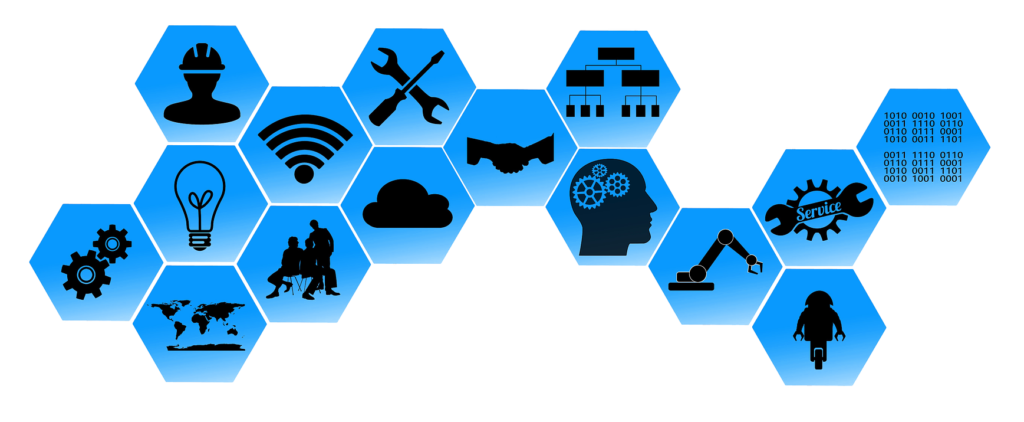 «About competitiveness against Asian market dominance, producers shall move on the path laboratory, so pilot production and so mass production fast forward. Producers among themselves have to look for partnerships and alliances to master the huge amount of different technological challenges. Finally, producers and suppliers have to consider themselves as partners. It will motivate manufacturers to expand their original areas of responsibility to include battery technology development».
«About competitiveness against Asian market dominance, producers shall move on the path laboratory, so pilot production and so mass production fast forward. Producers among themselves have to look for partnerships and alliances to master the huge amount of different technological challenges. Finally, producers and suppliers have to consider themselves as partners. It will motivate manufacturers to expand their original areas of responsibility to include battery technology development».
Ingomar Krahl underlined the state of the art of laser cutting in Asia: 80% of anode cutting with laser, 20% of cathode cutting with laser and typical laser speed of 500mm/sec. The comparison with European performance is clear: following new development in Europe, laser cutting of cathode material have typical laser speed of 3000 mm/sec, heat effective zone 15% less than state of the art laser cutting.
Broad room was dedicated to the presentation of solutions and machines by J&R and to the synergy that the producer allows with knowledge of industrial printing technology division transferred to fuel cells production. The pluses are fully automatic, high accuracy printing unit alignment, JR’s own print quality control, integrated drying and MES connections for Industry 4.0.
Testing operations in the manufacturing of li-ion battery cells
The webinar witnessed the participation also of Anisa Kapxhiu from Marposs, who dedicated her speech to testing operations in the manufacturing of li-ion battery cells.
Marposs, founded in Italy in 1982 and present in China since 1986, has become a top player in measurement technology by offering customers a combination of advanced products, market knowledge and commitment to long-term global partnership.
Last year, there was a noteworthy increment of the use of lithium batteries in electromobility applications. This has implied, consequently, a growth of electrical testing of li-ion battery systems. «Marposs can propose the widest range of solutions dedicated to quality and process control in the manufacturing process of batteries: end-of-line testing, beginning-of line testing, solutions for cells grading and sorting, insulation tests, BS communication testing and dimensional check and leak testing».
Among the other contents, Anisa Kapxhiu dealt with the thickness measurement: the preliminary measurement is the dimensional assessment. «Number and position of the measuring points and the sequences of the measurement points can be freely programmed according to customer’s requirements.
Different measurements can be performed, according to customer’s specifications». The first electrical station can perform open circuit voltage and alternate current internal resistance. Cells that have a voltage level outside the nominal range specified for the cell type, are rejected.
Encapsulation system for on-board charger
The following speaker was Fabio Campanini from Elantas who brought the speech “Encapsulation system for on-board charger: road map of a successful development.
 The general introduction concerns the e-mobility field that represents the concept of using electric powertrain technologies, in-vehicle information, and communication technologies and connected infrastructures to enable the electric propulsion of vehicles and fleets. They went then into the technical detail with the schematic description of power electronics components. «For the pure EV and the parallel hybrid, a high voltage bus supplied by the large battery, drives the electric powertrain. Along with the large Li-ion battery, a significant investment is required to develop these architectures. During decelerating, the momentum of the vehicle turns the generator, which sends power back through the inverter to charge the battery».
The general introduction concerns the e-mobility field that represents the concept of using electric powertrain technologies, in-vehicle information, and communication technologies and connected infrastructures to enable the electric propulsion of vehicles and fleets. They went then into the technical detail with the schematic description of power electronics components. «For the pure EV and the parallel hybrid, a high voltage bus supplied by the large battery, drives the electric powertrain. Along with the large Li-ion battery, a significant investment is required to develop these architectures. During decelerating, the momentum of the vehicle turns the generator, which sends power back through the inverter to charge the battery».
Focus was also on the topic regarding the on-board charger. It is the system built into the car to recharge the high voltage battery from the AC grid while the vehicle is parking. «A compact on-board battery charger for electric vehicles converts an alternating voltage into a variable direct voltage used to charge the voltage accumulator. It is integrated into the vehicle and can be used as a stand-alone charger or a parallel device for electric vehicles completing the standard charger and offering the user a better charging performance and a shorter refueling time».
Another crucial topic was the thermal management, which includes various forms of heat transfer, like conduction, convection and radiation. Conduction is the main mode of heat transfer in solids and thermal conductivity is expressed in W/mK.
«Unfilled resins have usually a thermal conductivity of 0.2-0.3 W/m*K, 10 times higher than air which is 0,02 – 0,03 W/mK».
Increasing complexity of the parts and highly demanding applications sum up more and more constrains to be overcome. «In close and continuous cooperation with customers we will bring our chemical competences a step forward to meet the challenges of tomorrow».
European cell production
The last protagonist of the event was Heiner Heimes, managing senior engineer di PEM RWTH Aachen University who spoke of European cell production, the current status and future developments.
 His report examines the entire value chain of cell production in the field of tension between economy and ecology. In doing so, the study’s authors conclude that Germany’s competitiveness will increasingly depend on direct access to battery cell production and an efficient circular economy.
His report examines the entire value chain of cell production in the field of tension between economy and ecology. In doing so, the study’s authors conclude that Germany’s competitiveness will increasingly depend on direct access to battery cell production and an efficient circular economy.
“It is our responsibility to make the lithium-ion battery and its entire manufacturing process more cost-effective and resource-efficient. In this context, new production trends and promising recycling approaches are already emerging.”
The “Battery Monitor” summarizes current challenges and future solution paths at all levels: from raw material extraction and cell production to module and pack production as well as engineering and testing to use and reuse.
The standardization of battery systems would reduce the development effort per vehicle, increase the upgradeability of the systems and make production more cost-effective and geared to individual customer requirements. In addition, virtual validation processes could soon help to reduce technical damage and high prototype investments as well as the number of costly test trials.
Citroën’s hydrogen van
Citroën is enlarging its range of electrified commercial vehicles and it has recently delivered the first ë-Jumpy hydrogen to Suez Group.
A milestone in the electrification strategy of Citroën, benefitting from huge investment plans in France and in Germany.
The hydrogen solution addresses those who need an autonomy exceeding 300 km for long travels or long journeys and call for a fast recharge to maximise the use time.
Ë-Jumpy Hydrogen is equipped with two complementary propulsion systems: a battery that stores energy and supplies electricity and a fuel cell that converts the hydrogen and oxygen of the air into electricity, water and heat. Until it is hydrogen-powered, the energy generator operates in continuous.
Therefore, the electric motor, mainly powered by the 45-kW hydrogen cell, can develop an autonomy extended by almost 350 km. 10.5 kWh lithium-ion battery acts as a reserve for an autonomy of 50 km in the WLTP cycle. Citroën ë-Jumpy Hydrogen has a range of over 400 km. Its three 700 bar carbon-fibre hydrogen tanks, which sit next to the battery under the front seats, can be filled in just three minutes.
CITROËN ë-Jumpy Hydrogen, assembled in France in SevelNord factory, is transformed into the competence centre on the hydrogen fuel cell by Stellantis Group in Russelsheim, in Germany.
The electric motor cooling vision
To outline the state-of-the-art from the engineering point of view about Electric motor cooling in automotive applications, involving academic world and industries, it was organized a highlighting workshop that has called, to share their vision, players in automotive induced activities, from OEM, to Tier One and Tier Two suppliers. Technology is evolving to allow higher and higher efficiencies and more performing motors.
How much is it important, what is the state of the art and what are next technological moves concerning the electric motor cooling in automotive applications? Outstanding representatives of the academic and industrial world have provided their expertise and vision on this issue.
At the helm of the event, organized by Electric Motor Engineering and Tecniche Nuove and broadcast last January 31st, we have found Professor Marco Villani, professor of Electrical Machines Design and Electric Systems for Mobility at the University of L’Aquila.

The session was opened by Alessandro Ventura, Corporate Technical Director Meccanotecnica Umbra, who has cast the spotlights on Mechanical seals for electric motors cooling systems. The range of products he evaluates includes Mechanical Seals for different appliances: for automotive, for household, for aviation sector, but also for medium-duty and Hi-duty application and for hydropower applications.
Reference markets are manifold: automotive, aviation, agriculture, food&beverage, mining, energy, refrigeration, civil sector, appliances, Pulp&Paper, chem/pharma and industrial general purpose.

The stator housings and Rotor shafts for Electric motors with integrated cooling circuits were instead the theme of the speech by Philipp Bucher, Head of Sales LCD LaserCut AG. Under the magnification lens, the added values of 3D additive manufacturing in terms of improved motor cooling: integrated housing cooling, integrated shaft cooling, integrated end shields cooling, integrated power electronics cooling, integrated peripheral features, integration of weight reducing holes and minimal material need. Among the important topics that they have considered in 3D additive manufacturing there are housing and shaft designs that need to be developed from the very begin, based on the specific 3D manufacturing requirements and chances.

Giada Venturini, E-Machine Engineer Motor Design Ltd, and Husain Adam, Thermal Specialist Engineer Motor Design Ltd, spoke instead of Advanced Software for Thermal Analysis of Electric Motors. High power density, high efficiency, low cost are the advantages that can be given by advanced cooling systems. Several solutions and configurations for eMobility are discussed more in details.
«Thermal response analysis is essential for meeting the performance: machine operating temperature limits the electric loading, increasing in operating temperature cuts insulation life, magnet performance is very sensitive to temperature and copper loss is temperature dependent.

The message sounds clear: effective thermal management is critical to ensure high power dense machine lifetime and reliability. The two young engineers stressed Ansys Motor-CAD capabilities concerning both thermal and Cooling types. Wide room was also dedicated to Direct Stator Cooling & Flooded Stator Cooling and to Oil Spray Cooling, Oil jets and Oil Dripping Cooling.
The workshop was ended by the speech EV/HEV motors and advantages in terms of thermal dissipation through potting, delivered by Alberto Menozzi, Plant Manager – Technical Director, Demak Polymers of Demak Group, which can boast mechanical and chemical know-how: the company’s great value precisely derives from the combination of these two competences.

The core of his speech is the resin encapsulation of electric motors for EV/HEV applications.
Thanks to the experience gained during these last years, many advantages of a full resin potting compared to other technologies, such as impregnation and trickling. The resin is a perfect electrical insulator, and it delivers properties that are absolutely incomparable to other insulating methods, including: enhanced water and dust resistance, chemical resistance, less vibration, less noise and most of all, perfect heat dissipation and improved thermal shock resistance.
Grob awarded for its Electric Drive with Hairpin Technology
Recently, GROB was honoured by ZF with the Performance Award in the category “Operational Excellence for Non-Production Material” for its achievements in a major project for “Electric Drive with Hairpin Technology” in recognition of its high level of innovation, quality and reliability of its machines and systems in international competition.
«The Performance Award – said German Wankmiller, GROB Chairman of the Board – is a high honour and appreciation from our customer ZF, as we prevailed against all other machine and plant manufacturers. But it is also a recognition of the high innovation, quality and reliability of our machines and systems and of our performance, which we owe to our highly skilled and motivated employees in Dalian and Mindelheim. We all feel really very happy and satisfied about that».
The partnership between the two companies is sound: ZF has been a GROB customer for decades for production equipment for the well-known 8-speed HP automatic transmissions. GROB is currently working on a major project for ZF for an electric drive with hairpin technology. This order for the stator, rotor and an impregnation machine is handled by GROB with its Dalian factory in China. The systems were developed and designed at GROB in Mindelheim.
Looking for potting solutions
In the first months of 2022, Demak Group will launch a new consultancy service called “Potting Sprint” that will provide a comprehensive and customized potting project in 2 weeks only.
Demak Group has also recently released its brand-new website. Completely re-designed in its look, it has been conceived to become a useful tool for everyone looking for potting solutions in the different industries the Group serves.
Its structure looks easy to browse when looking for resin dispensing equipment, resin systems or consultancy on potting projects.
Demak has strategically focused its attention on the E-mobility section where it is possible to understand at first sight all the advantages provided by the potting technology, finding components in which Demak has already experienced potting projects, a wide selection of dispensing equipment, from compact machines to fully automatic lines, more than 200 resin systems with suitable performances for any e-mobility project, a potting lab where to perform dedicated tests.
Nissan celebrates history with the future
To celebrate the 35 years of Sunderland factory, Nissan has thought of converting a Bluebird, the first car manufactured by production lines in 1986, from thermal car to 100% electric car called Newbird.
The petrol engine and the original gearbox have been removed and replaced by a motor, an inverter and a 40kWh battery by LEAF. The battery modules have been split between engine compartment and trunk, to distribute weights in balanced manner. Power steering, brakes and heating system have been modified to be electrically powered and customized suspensions have been installed to support the additional weight of the battery pack.
In this regard, the battery socket is accessed from the original fuel flap, and the first can be recharged up to 6.6kW. The original dashboard has been adapted, so that the instrument that previously indicated the fuel level now shows the battery charge status.
The shift from thermal to electric car was managed by Kinghorn Electric Vehicles, a family-owned company headquartered in Durham, specialized in the conversion of vintage cars, by using LEAF second-life motors, inverters and batteries.
In conformity with the new long-term Ambition 2030 plan, Nissan will be a fully sustainable company, which will share in creating a cleaner, safer and more inclusive world. Such vision supports Nissan’s goal of reaching the carbon neutrality in the whole lifecycle of its products within the 2050 fiscal year.
Hand in hand with the presentation of Ambition 2030, Nissan has revealed the Chill-Out concept, the state-of-the-art electric crossover that will be implemented in Sunderland.
The investments by Mercedes for axial-flux motors
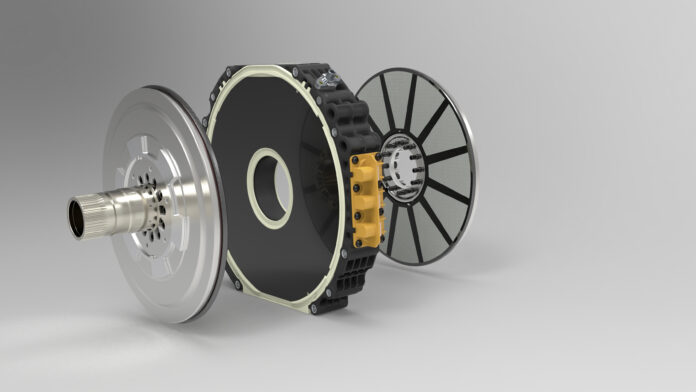
Last summer, Mercedes took over Yasa, British company that produces axial-flux motors. Recent news reveal that the Berlin factory is planning to widen its plant to host a new production line intended for Yasa motors, super-compact and super-efficient units. Works will be accomplished in six years and need an investment exceeding 100 million Euros. Moreover, the work opportunity was seized on the fly also to build the Digital Factory Campus, a structure intended for the development and optimization of new software applications in the ambit of the MO360 programme: pioneering technologies already in advanced implementation phase that in 2022 will start the pre-production.
These last moves clearly show that the Berlin structure for Mercedes is a real focus centre for its digital systems and its electric powertrains.
Jorg Burzer from Mercedes, declared: «The transformation of the automotive industry is more evident in our Berlin site than in any other Mercedes-Benz factory. The shifting from a production site for conventional drive components into a competence centre for the digitalization and the production in the electric mobility field is a significant step for us. With the production of high-performance electric motors, Berlin factory will become a fundamental pillar of the sustainable electrification strategy by Mercedes-Benz».
High efficiency for the logistics world
Geodis transport and logistic company has won the Logistic Award of 2021-year for the implementation of an innovative sorter system that recovers energy, powering strategic electric motors. The project concerns an automatic sorter system, implemented for a giant in the e-commerce, with which the player has collaborated for several years now.
The innovative aspect of such sorting system consists in the use of a linear alternator that recovers energy. The induced magnetic energy generated in the pick-up, in fact, is successively processed and transmitted in wireless modality to power the electric motors of the belts on moving conveyors. Unlike alternators, the sorter exploits the linear translatory motion and avoids the cable current dispersion, since it transmits it in wireless modality. Therefore, it is a solution that guarantees efficiency in the parcel sorting phase and, furthermore, it permits a decrease of electric consumptions, in test environment a reduction up to 70% of current was reached and, consequently, of CO2 emissions.
The witness by Fabrizio Airoldi, Country Manager of GEODIS in Italy: «This project confirms the will of studying innovative solutions that can increase the efficiency of the whole process, with lower energy consumptions and improving the use of skilful human resources operating in the various warehouses, entrusting them with higher added-value activities».

